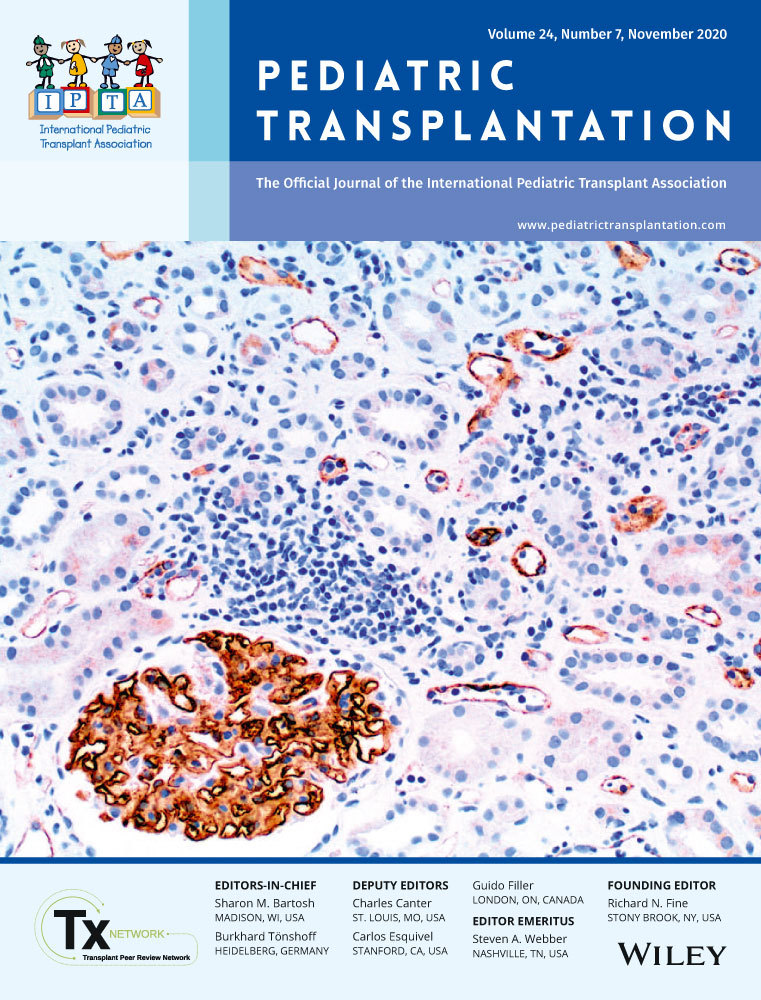Pediatric retransplantation of the liver: A prognostic scoring tool
Abstract
Few prognostic models have been created in children that receive liver retransplantation (rLT). We examined the SRTR database of 731 children that underwent second liver transplant between 2002 and 2018. Proportional hazards models using backward variable selection were used to identify recipient, donor, and surgical characteristics associated with survival. A simple prognostic scoring system or nomogram (ie, each risk factor was weighted on a five-point scale) was constructed based on the fitted model. Recipient age (P < .001), MELD/PELD (P < .001), recipient ventilated (P = .003), donor cause of death (P = .024), graft type (P = .045), first graft loss due to biliary tract complications (P = .048), and survival time of the first graft (P = .006) were significant predictors of retransplant survival. The bias-corrected Harrell's C-index for the multivariable model was 0.63. Survival was significantly different (P < .001) for those at low risk (0-4 points), medium risk (5-7 points), and high risk (8+ points). Survival was equivalent between low risk pediatric second transplant recipients and pediatric primary liver transplant recipients (P = .67) but significantly worse for medium- (P < .001) and high-risk (P < .001) recipients. With simple clinical characteristics, this scoring tool can modestly discriminate between those children at high risk and those children at low risk of poor outcomes after second liver transplant.
CONFLICT OF INTEREST
The authors declare no conflicts of interest.




